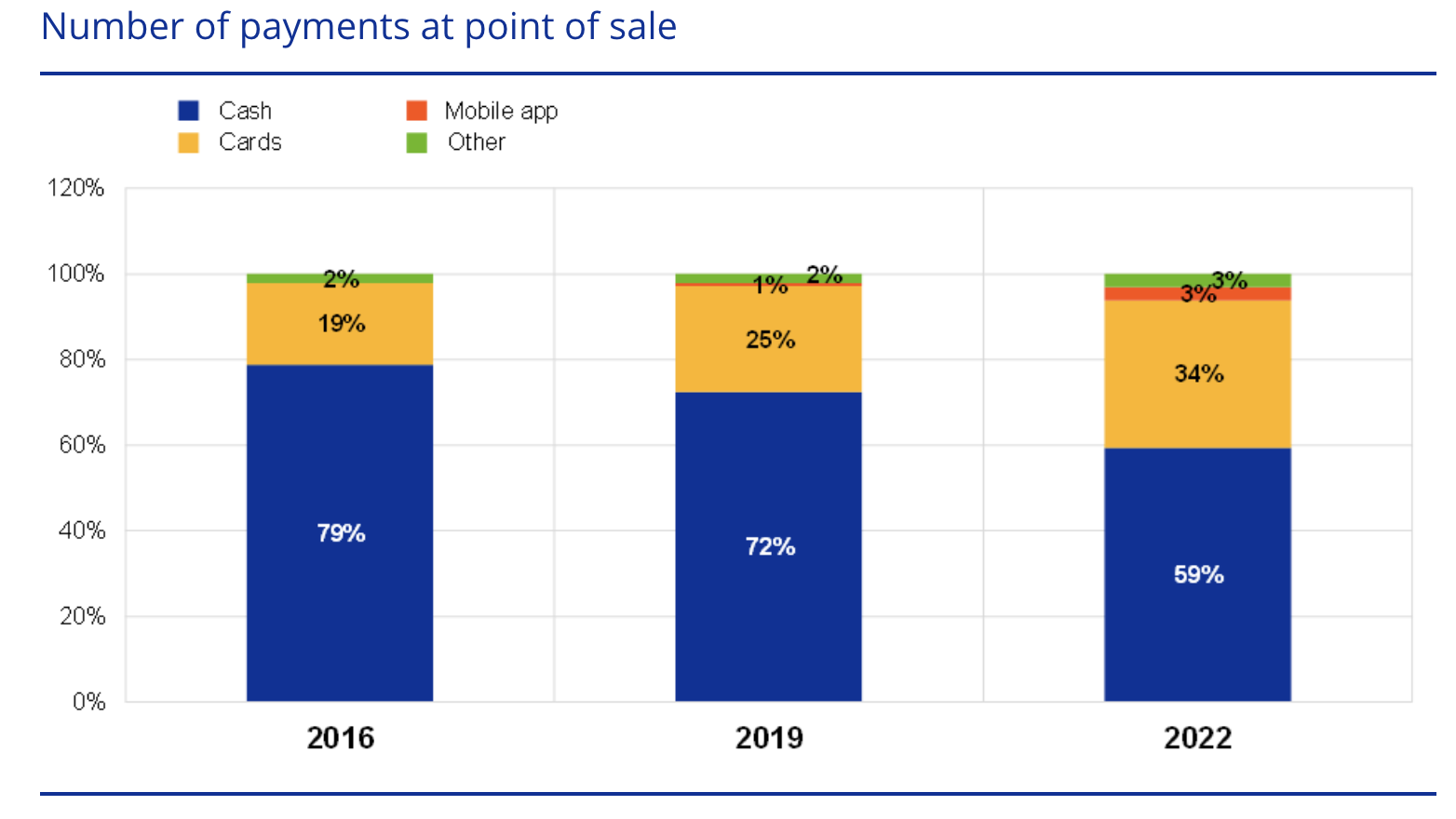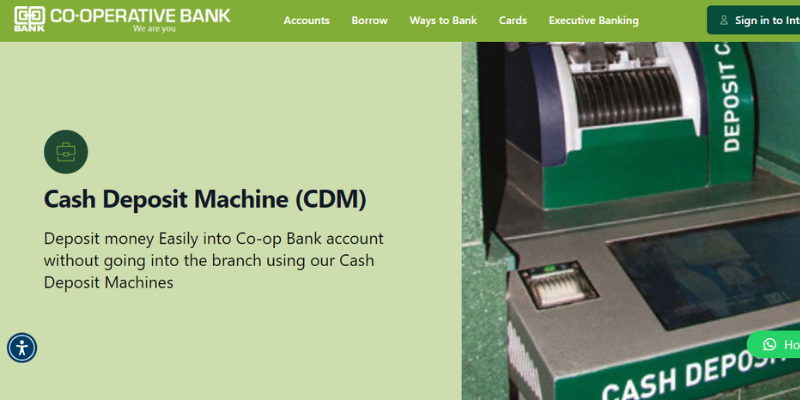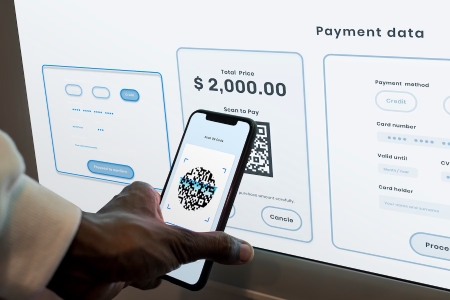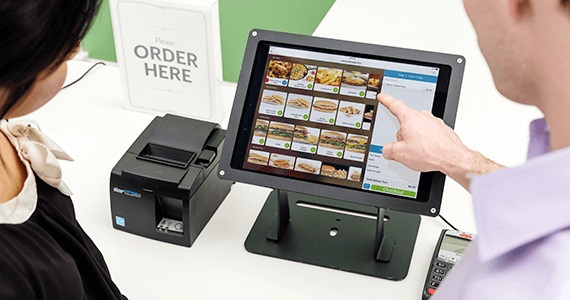Are you tired of dealing with loose change or worrying about the security risks of carrying physical currency?
This brings up cash digitization in daily practices, which has taken the financial sector by storm!
As daily activities become heavily internet-dependent, individuals look for convenience in the most important part of everyday and business life. Going cashless is set to improve the financial ecosystem by providing secure transactions.
In this blog, we cover the following topics related to cash digitization in detail:
- What is cash digitization?
- The current cash landscape
- Technologies upscaling cash digitization
- Future trends of cash digitizing
- Process of cash digitizing
Keep reading to learn more!
What is Cash Digitization?
Cash digitization transforms traditional physical currency, such as coins and banknotes, into digital forms. This allows money to be easily stored, transferred, and used for financial transactions electronically.
A survey conducted by the International Monetary Fund (IMF) in 2021 concluded that around 111 countries from its 159 member countries are planning to introduce digital money in the near future.
Digital money and banking have now become a priority globally. A leading financial solutions company, J.P Morgan, believes that robotics, virtual branches, and data analytics will replace physical cash.
Understanding the Current Cash Landscape
The upcoming trends in consumer spending have taken a completely digital approach and necessitate a grasp of the current cash landscape.
In this part of the blog, we will explore the challenges traditional cash systems face, examine cash usage trends and statistics, and assess the impact of cash on businesses and society.
Challenges of Traditional Cash Systems
Traditional cash systems have encountered their fair share of hurdles in recent times. One notable challenge is the increasing demand for convenience and efficiency in financial transactions.
Traditional cash systems require careful cash flow management to ensure adequate liquidity for daily operations. It requires accurate cash forecasting and reconciling cash records, which can be challenging and time-consuming.
As digital payment methods gain popularity, traditional cash systems can seem cumbersome and time-consuming in comparison. Additionally, managing physical cash involves storage, security, transportation, and counterfeit detection expenses, which can significantly burden businesses.
Cash Usage Trends and Statistics
To comprehend the future of consumer spending, it is essential to analyze the trends and statistics surrounding cash usage. While cash still remains a widely used payment method, its dominance is gradually decreasing.
With the advent of electronic payment methods, such as credit and debit cards, mobile wallets, and online transfers, consumer look for convenience. Understanding consumer behavior shifts is crucial for businesses to adapt their strategies accordingly.
Let’s look at some statistics on the trends of cash digitization:
- According to World Bank, digital banking has been gaining rapid advancements since the pandemic of 2019.

- According to the European Central Bank, the preferences for cash payments vs. digital banking have decreased from 79% in 2016 to 59% in 2022.
- Another report by Insider Intelligence states that point-of-sale transaction by cash was 18% in 2022. It has been projected to decrease to 10% by 2025 worldwide.
Impact of Cash on Businesses and Society
Cash has a profound impact on both businesses and society as a whole. For businesses, the reliance on cash transactions can create operational challenges, such as the need for accurate cash management, cash flow forecasting, and the risk of theft or robbery.
Accepting only cash payments may limit customer accessibility, especially in an increasingly digital world. Cash transactions can contribute to illicit activities, tax evasion, and money laundering.
The transition to digital payments offers the potential for increased transparency and traceability, enabling authorities to combat financial crimes more effectively. Moreover, the digitization of cash can foster financial inclusion, making it easier for individuals without access to traditional banking systems to participate in the economy.
Technologies Driving Cash Digitization
As discussed earlier, recent technologies have been the driving force behind cash digitizing trends. Cash digitization continues to reshape consumer spending. These technologies pave the way for a more efficient, secure, and convenient payment ecosystem.
Businesses that adapt to these trends and solutions, like those offered by Wavetec, not only meet the evolving needs of their customers but also gain a competitive edge in the digital marketplace. We discuss the evolving uses that aid the implementation of cash digitization.
Mobile Payments and Digital Wallets
One of the prominent drivers of cash digitization is the widespread adoption of mobile payments and digital wallets. With the increasing popularity of smartphones, consumers now have the convenience of making secure transactions with just a few taps on their screens.
Mobile payment platforms and digital wallets, such as Apple Pay, Google Pay, and Samsung Pay, have revolutionized how people pay for goods and services.
These solutions eliminate the need for physical cash and offer additional features like loyalty programs and easy access to transaction history.
All you need is a stable internet connection to send money to anyone in the world—no more hassle waiting for someone to carry the cash for you.

If you need to visit the bank branch, Wavetec offers CQuick Cash Deposit Solution. Such cardless ATM machines allow instant cash deposits, typically within 30 seconds. What does it mean for the customer? No more queuing for a small task!
Another Wavetec solution, Azimut’s Cash to Card Solution, has been a game changer. It allows customers to deposit cash and receive a prepaid card immediately. This has made cashless banking easier for individuals who cannot operate banking apps.
These cutting-edge kiosks provide mobile payment solutions, enabling businesses to integrate seamless digital wallet experiences into their operations.
With their advanced technology, they provide secure and efficient mobile payment options, enhancing the overall consumer experience.
Contactless Payment Solutions
With contactless payment methods, such as Near Field Communication (NFC) and Radio Frequency Identification (RFID), consumers can make payments by simply tapping or waving their cards or smartphones near the payment terminals.
This technology offers a faster, more convenient, and hygienic payment experience, which is particularly important in a world where minimizing physical contact has been crucial since COVID.
The healthcare, retail, and finance industries are the first ones that have particularly adopted this.
Cryptocurrencies and Blockchain Technology
Cryptocurrencies, like Bitcoin and Ethereum, and the underlying technology behind them, blockchain, have gained significant attention in recent years.
These decentralized digital currencies offer a secure and transparent method of transferring value without the need for traditional financial intermediaries.
While their adoption as a mainstream payment method is still evolving, cryptocurrencies can disrupt traditional cash transactions and drive cash digitization globally.
Biometric Authentication and Identification
Biometric authentication and identification technologies, such as fingerprint recognition, facial recognition, and iris scanning, play a vital role in enhancing the security and convenience of digital transactions.
Users can make secure transactions without physical cards or passwords by linking payment methods to unique biometric markers. Biometric authentication adds an extra layer of protection against fraudulent activities and ensures a seamless user experience.
Future Outlook and Trends in Cash Digitization
Integration of Internet of Things (IoT) and Cashless Payments
One significant trend in cash digitization is integrating Internet of Things (IoT) technology with cashless payments.
IoT devices, such as smartwatches and connected home devices, are becoming more prevalent, providing convenient and secure ways for consumers to transact without physical cash.
These devices can connect to payment platforms, enabling seamless and effortless payments in various settings, including retail stores, online shopping, and public transportation.
The emergence of Central Bank Digital Currencies (CBDCs)
Another notable development in cash digitization is the emergence of Central Bank Digital Currencies (CBDCs). CBDCs are digital forms of traditional fiat currencies issued and regulated by central banks.
These digital currencies offer faster and more secure transactions, enhanced financial inclusion, and increased transparency in the payment ecosystem.
Many countries worldwide are exploring or piloting CBDC projects, indicating a potential shift towards digital currencies as a mainstream form of payment.
Continued Innovation in Payment Technologies
The evolution of cash digitization is fueled by ongoing innovation in payment technologies.
Fintech companies and established financial institutions constantly develop new solutions to enhance the consumer payment experience. These advancements aim to reduce reliance on cash.
Innovations and recent technologies include mobile payment apps, contactless payment methods like Near Field Communication or QR code payments, biometric authentication with fingerprint or facial recognition, and blockchain-based payment systems.
Global Shift Towards Cashless Economies
As the benefits and convenience of digital payments become increasingly apparent, there is a global shift towards cashless economies. Many countries are witnessing a decline in cash usage as consumers embrace digital payment methods.
A 2021 Orgio Group and the Payments Investigation survey found that only 8% of Swedes used cash in their most recent purchase. This contrasted with 77% of Swedes who used a bank card.
Governments, financial institutions, and businesses actively encourage this transition by promoting electronic transactions and creating supportive infrastructures. The growing acceptance and adoption of digital wallets, mobile banking, and online payment platforms contribute to gradually reducing cash transactions.
Cash Digitization Process
Cash digitizing may come off as a daunting task to implement in banks. We have listed the steps of the cash digitization process for you to follow.
- Preparing for Cash Digitization
- Choosing Cash Digitization Technologies
- Implementing Cash Digitization
- Communicating and Educating Stakeholders
- Ensuring Security and Fraud Prevention
Let’s go through each step in detail.
Step 1: Preparing for Cash Digitization
Before embarking on the cash digitization journey, thorough preparation is key. This involves assessing the current state of your business and identifying areas where cash digitization can bring the most benefits.
Consider factors such as customer preferences, transaction volumes, and existing infrastructure. Evaluate your organization’s readiness and make any necessary adjustments to ensure a smooth transition.
Step 2: Choosing Cash Digitization Technologies
Selecting the right cash digitization technologies is vital for a successful implementation. Research and explore various options available in the market. The available options are mobile payment systems, digital wallets, or contactless payment solutions.
Assess their compatibility with your existing systems and the potential impact on your customers’ experience.
Look for technologies that offer robust security features, seamless integration, and user-friendly interfaces. This ensures that you are investing in a technology that eases the burden.
Step 3: Implementing Cash Digitization
Once you have identified the suitable cash digitization technologies, it is time to implement your plan. This major step involves integrating the chosen systems into your infrastructure, such as point-of-sale (POS) terminals or online payment gateways.
Collaborate with your IT department or relevant service providers to ensure smooth implementation. Rigorous testing and piloting should be conducted inside your organization to address potential issues before launching the solution to your customers.
Step 4: Communicating and Educating Stakeholders
Proactive communication and education are essential for the successful adoption of cash digitization. Engage with your stakeholders, including employees, customers, and business partners, to inform them about the benefits and processes of cash digitization.
You do not want to invest in a technology that customers would not feel receptive to. Therefore, provide training sessions, workshops, or informative materials to familiarize them with the new payment methods and address their concerns.
Clear communication and ongoing support will help build trust and encourage widespread acceptance.
Step 5: Ensuring Security and Fraud Prevention
As with any digital payment system, security and fraud prevention measures are paramount. Implement robust security protocols to safeguard sensitive customer information and transaction data.
Regularly update and monitor your systems for any potential vulnerabilities. Employ advanced encryption methods, multi-factor authentication, and real-time fraud detection mechanisms to mitigate risks.
Collaborate with industry experts and stay informed about the latest security practices to maintain a secure cash digitization environment.
Case Study

Co-operative Bank’s Innovative Cash Deposit Solution Revolutionizes Banking in Kenya
Co-operative Bank’s implementation of cash deposit machines in Kenya reflects a proactive approach to meeting customers’ evolving needs and embracing technological advancements in the banking sector.
The primary goal of Co-operative Bank was to provide customers with a convenient and efficient means of depositing cash, reducing reliance on traditional teller services and fostering a more seamless banking experience.
This initiative aligns with the broader industry trend of incorporating technology to enhance financial services accessibility.
Cash Digitization – FAQs
What technologies are driving cash digitization?
The key technologies driving cash digitization include mobile payment systems, digital wallets, contactless payment solutions, and blockchain-based platforms.
What are the implications of cash digitization for traditional banking systems?
Cash digitization may decrease demand for traditional banking services like cash handling. On the contrary, banks can adapt by offering digital banking solutions and partnering with fintech companies.
How does cash digitization impact cross-border transactions?
It enables faster and cost-effective international payments by reducing reliance on traditional intermediaries. Blockchain technology facilitates secure peer-to-peer transactions.
Final words
Are you ready to adopt cash digitization to revolutionize consumer spending?
With mobile payments, contactless solutions, cryptocurrencies, and biometric authentication, transactions are becoming faster. Embracing the new trends toward cashless transactions empowers businesses to meet evolving consumer preferences.
As cash becomes increasingly digital, organizations need to adapt to innovative solutions to stay ahead in the ever-changing landscape of consumer spending.
What are you waiting for?
Go cashless with Wavetec’s Digital Banking solutions.
Get in touch with us to implement cash digitizing in your niche!
BOOK A FREE DEMO






